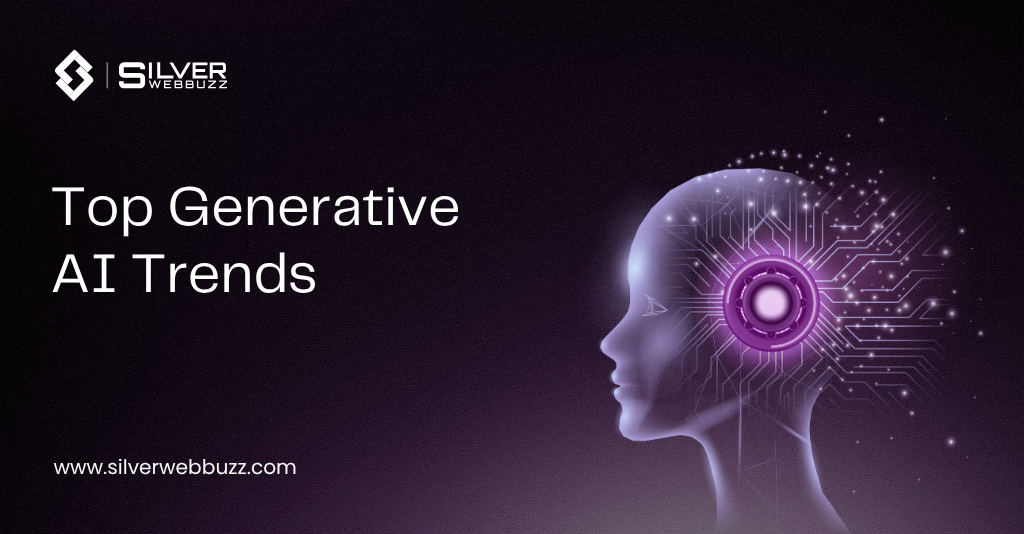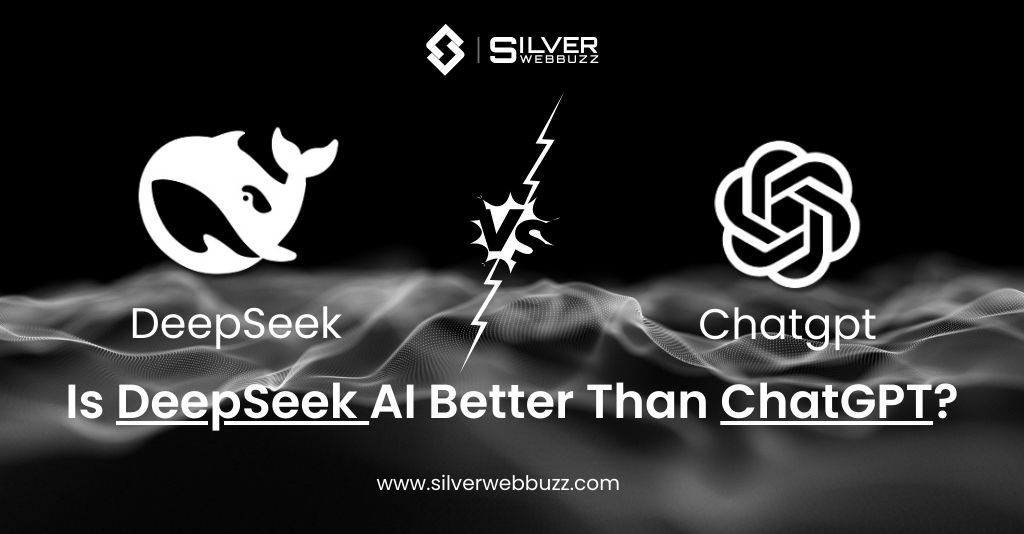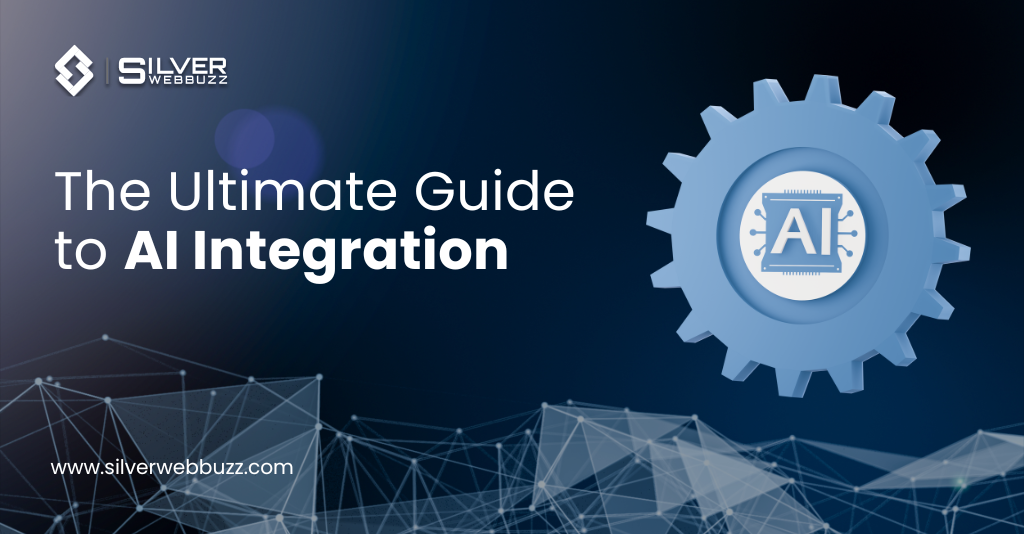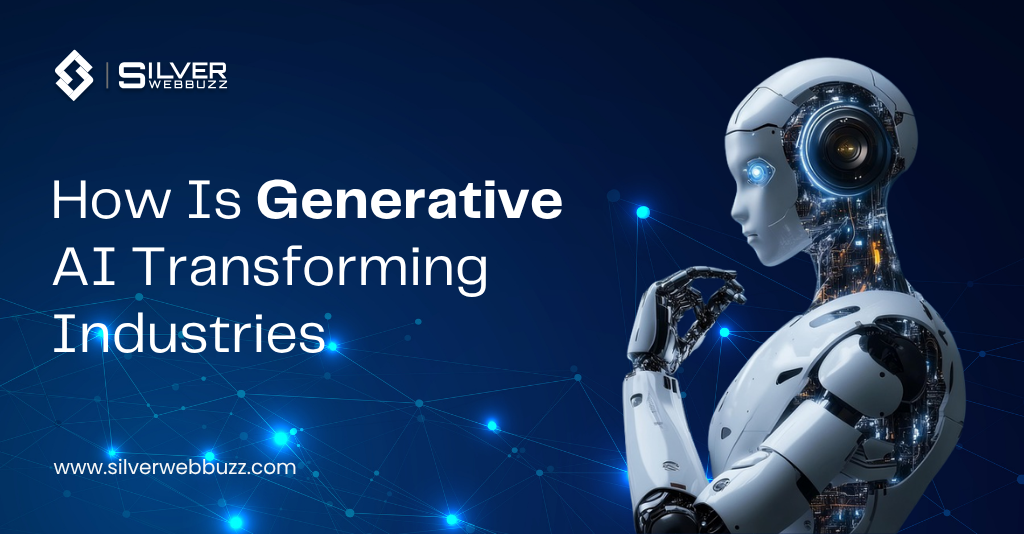In just two years, generative AI has evolved from a fascinating experiment to a foundational layer of digital transformation. What began as text-to-image tools and chat assistants is now deeply embedded in enterprise workflows, from sales and marketing to coding, design, and operations.
According to McKinsey & Company, the use of generative AI in organizations rose sharply to 71% in 2024, marking one of the fastest adoption curves in enterprise technology history. This shift signals that generative AI is no longer a novelty — it’s infrastructure.
At the same time, Grand View Research estimates the global generative AI market will grow from USD 16.87 billion in 2024 to USD 109.37 billion by 2030, reflecting a remarkable 37.6% CAGR. This surge is driven by a convergence of factors — advancing models, hardware innovation, open-source competition, and growing enterprise trust in AI systems.
But 2025 is more than just a growth year. It’s a turning point where governance, transparency, and real-world productivity will determine who leads in the next phase of the AI race.
In this article, we’ll break down the top generative AI trends to watch in 2025 and beyond, explore why they matter, and show what businesses can do now to prepare for the future of generative AI.
What Is Generative AI?
Generative AI refers to algorithms and models capable of creating new content — such as text, images, videos, code, or audio — by learning from vast datasets. Unlike traditional AI systems that classify or predict, generative models generate entirely new outputs that mimic human creativity.
The latest generation of these models — like GPT, Gemini, Claude, and open-source LLaMA — are multimodal, meaning they can handle multiple input types (text, image, audio, video) within the same system. These capabilities are driving the creation of digital assistants, copilots, AI-driven content tools, and automated customer experiences across industries.
Why It Matters in 2025
The future of generative AI lies in practical integration. In 2025, organizations will move from pilot projects to core business deployment, using AI not just to enhance creativity but to streamline operations, accelerate decision-making, and reduce costs.
With AI copilots entering mainstream productivity software, enterprises now see direct ROI in automation, improved accuracy, and faster content or code generation. For AI developers and Artificial intelligence development companies, this trend opens new opportunities in custom model design, fine-tuning, and domain-specific solutions.
Market Snapshot — Size, Growth Projections, and Spending Trends
The global generative AI market is entering an accelerated growth phase. Multiple research firms forecast multi-year expansion, with Grand View Research projecting an increase from USD 16.87 billion in 2024 to USD 109.37 billion by 2030. This represents a CAGR of approximately 37.6%.
Other independent analyses align with this upward trajectory, predicting sustained double-digit growth as adoption deepens across industries such as media, retail, healthcare, and manufacturing.
Key Drivers of Growth
- Enterprise adoption: AI copilots integrated into software ecosystems.
- Specialized hardware: Demand for GPUs, accelerators, and high-speed networking.
- Regulation and trust frameworks: Improved governance enabling safer deployment.
- Open-source expansion: Lowering entry barriers and spurring innovation.
Who’s Spending?
- Large enterprises are leading investment in generative AI infrastructure, especially for internal copilots and custom LLMs.
- SMBs and startups are increasingly using cloud-based APIs and fine-tuned open-source models to scale operations efficiently.
- Governments and regulators are funding AI safety, transparency, and education programs to guide responsible adoption.
By 2025, AI budgets are expected to become a core line item in digital transformation strategies, particularly in sectors like finance, healthcare, and manufacturing.
Enterprise Copilots and Productivity Platforms
What’s Happening
One of the most transformative generative AI trends in 2025 is the integration of AI copilots into everyday enterprise workflows. What started as optional AI chat features in apps has now evolved into fully embedded productivity platforms across departments like sales, marketing, customer service, HR, and software engineering.
According to McKinsey & Company, 71% of organizations reported using generative AI in at least one business function by 2024 — a dramatic rise from just 33% in 2023. This rapid adoption highlights that generative AI is now a core productivity driver, not just an experimental tool.
Why It Matters
- For enterprises, the business case is simple: AI copilots deliver measurable ROI.
- They automate repetitive tasks such as data entry, content creation, or code generation.
- They enhance accuracy by learning from organizational data and past decisions.
- They accelerate workflow speed, freeing human employees for higher-value strategic tasks.
In sectors like software development, AI-assisted coding platforms such as GitHub Copilot or Amazon CodeWhisperer have reduced development time by up to 40%, according to internal enterprise case studies. In customer service, companies now deploy generative AI chatbots that resolve up to 60% of customer queries autonomously, improving both efficiency and satisfaction.
Example: Generative AI in Action
A global financial services firm integrated a generative AI copilot into its internal knowledge management system. The result? Employees could instantly generate customer reports, regulatory summaries, and product briefs — saving an estimated 8,000 hours per quarter in manual documentation time.
This transformation mirrors a broader shift: from one-off automation pilots to enterprise-wide AI ecosystems that continuously learn and adapt to business goals.
Key Takeaway
By 2025, AI copilots will become standard features in most major business software suites. The focus will shift from simple content generation to intelligent orchestration, where copilots coordinate multiple business functions. Organizations that invest early in secure data integration and custom AI models will hold a significant competitive advantage.
Multimodal Models: Beyond Text
What’s Happening
In 2025, multimodal AI is becoming one of the most important AI trends shaping the next phase of digital innovation. Unlike earlier models that worked with a single input type (e.g., text-only or image-only), multimodal generative AI systems can process and generate text, images, audio, and video simultaneously.
According to TechDogs, 2024–2025 marked the turning point when multimodal models moved from research labs to mainstream use. Companies like OpenAI, Google, Anthropic, and Meta have released systems capable of reasoning across modalities — for example, describing an image in natural language, generating code from a design, or editing videos from text prompts.
Why It Matters
Multimodal AI is redefining what’s possible in human–computer interaction. Here’s why it matters for enterprises and developers:
- Unified experiences: Businesses can offer richer, more intuitive AI tools — think digital assistants that understand both text and images or customer support systems that analyze voice tone and chat history together.
- Creative acceleration: Marketing and design teams now use multimodal tools for concept generation, campaign creation, and even product prototyping.
- Cross-domain innovation: Developers can create applications that blend modalities — e.g., video-based code documentation or visual analytics dashboards.
This shift is also enabling new AI-driven product categories, such as AI design copilots, multimodal search engines, and video synthesis platforms that combine real-time visuals with context-aware language generation.
Example: Multimodal AI in Practice
A manufacturing company used a multimodal AI model to interpret visual defect images, read accompanying maintenance logs, and automatically generate repair recommendations. The result was a 30% reduction in diagnostic time and a significant improvement in quality control consistency.
Similarly, in healthcare, multimodal systems are being used to combine patient records, lab results, and imaging data to support faster and more accurate clinical summaries — a key step toward AI-augmented diagnostics.
Key Takeaway
Multimodal models represent the future of generative AI, bridging the gap between perception and reasoning. Businesses that adopt these systems gain the ability to understand and generate richer data — a major differentiator in industries where precision, speed, and creativity matter most.
The Hardware & Networking Bottleneck (GPUs, Accelerators, Interconnects)
What’s Happening
As generative AI models become larger and more complex, the demand for high-performance hardware has surged dramatically. The global race to secure GPUs, specialized AI accelerators, and high-bandwidth networking infrastructure is now one of the defining forces behind the generative AI trends 2025.
According to Global Market Insights Inc., the AI hardware market, which includes GPUs, tensor processors, and AI accelerators, experienced exponential growth from 2024 to 2025. This was driven by enterprises scaling AI workloads and cloud providers expanding data centers optimized for AI inference and training. Investopedia also reports that hardware giants such as NVIDIA, AMD, and Intel experienced record demand due to a global shortage of high-end chips used for generative AI tasks.
Why It Matters
The performance and scalability of generative AI systems depend directly on the availability and cost of compute infrastructure. Without sufficient GPU or accelerator access, even the most advanced models can’t be trained or deployed effectively.
This bottleneck affects organizations in several ways:
- Cost Pressure: High demand and limited supply of AI chips have driven up cloud computing costs.
- Speed and Scale: Companies with dedicated compute resources can train and fine-tune models faster, giving them a strategic edge.
- Vendor Dependence: A few dominant hardware players control much of the global supply chain, concentrating AI capability among large cloud and tech providers.
To overcome these constraints, enterprises are investing in hybrid compute architectures, optimizing model efficiency through quantization and pruning, and exploring on-device AI acceleration to reduce reliance on centralized data centers.
Example: Hardware Innovation in Practice
For instance, a leading automotive manufacturer deployed an internal GPU cluster dedicated to generative design and simulation models. By moving from shared cloud infrastructure to local AI accelerators, they achieved a 45% reduction in inference latency and lowered long-term compute costs by 20%.
Meanwhile, startups are leveraging new chip designs focused on energy efficiency and model parallelism, ensuring that large-scale generative AI workloads can run at lower power consumption — a growing concern in global sustainability discussions.
Key Takeaway
Generative AI’s expansion in 2025 is inseparable from the hardware and networking ecosystem that supports it. The organizations that strategically plan their compute infrastructure — whether through partnerships, multi-cloud setups, or hardware optimization — will control the pace of innovation.
Open-Source Models and the Democratization of AI
What’s Happening
Another defining AI trend shaping 2025 is the rise of open-source generative AI models. While proprietary models from major players like OpenAI, Anthropic, and Google continue to dominate headlines, a fast-growing ecosystem of community-driven, open models is emerging — and it’s changing how innovation happens.
According to TechDogs, the proliferation of open models and fine-tunable frameworks during 2024–2025 has lowered the entry barrier for startups, researchers, and smaller enterprises. Models such as LLaMA 3, Mistral, and Falcon now provide high-quality alternatives to commercial systems, allowing organizations to build domain-specific AI applications without heavy licensing costs.
Why It Matters
Open-source generative AI is reshaping competition and accelerating progress in several key ways:
- Accessibility and affordability: Companies can now deploy and fine-tune open models using their own data, ensuring greater control and privacy.
- Faster innovation: Community collaboration drives rapid experimentation, model improvement, and adaptation for niche use cases.
- Customization and ownership: Open-source frameworks let developers design models aligned with their exact industry needs — from legal and healthcare to manufacturing and finance.
- Transparency and reproducibility: Public access to model weights and documentation enhances trust, auditability, and compliance — especially as regulations tighten globally.
However, open-source proliferation also brings fragmentation and quality challenges. Not all models maintain rigorous safety or evaluation standards, making AI governance and monitoring more crucial than ever.
Example: Open-Source Impact in Business
A legal-tech startup fine-tuned an open-source language model on case law and compliance data to automate document summarization. By leveraging open frameworks instead of licensing proprietary APIs, they reduced their AI infrastructure costs by nearly 60%, while maintaining full data control.
In manufacturing, companies are training lightweight open models for predictive maintenance and generative design, integrating them directly into factory systems — all without sharing sensitive operational data with third parties.
Key Takeaway
The democratization of AI through open-source models will continue to expand in 2025 and beyond. Organizations can innovate faster, but they must also implement responsible AI practices to manage bias, model drift, and compliance risks.
Regulation, Transparency, and Copyright
What’s Happening
As generative AI rapidly matures, governments and regulators are stepping in to ensure ethical, transparent, and accountable AI development. In 2025, the EU Artificial Intelligence Act stands as the world’s first comprehensive regulatory framework designed to govern the design, training, and deployment of AI systems — including general-purpose and generative AI models.
According to Digital Strategy, the EU AI Act requires AI developers to disclose information about their training data, safety testing, and content provenance. It also classifies AI systems by risk level — minimal, limited, high, and unacceptable — each with specific compliance and reporting obligations.
This wave of regulation is setting a global precedent, prompting similar policy discussions in the United States, Canada, and parts of Asia.
Why It Matters
Regulation is now a strategic variable in AI planning. For organizations, compliance isn’t optional — it directly impacts model design, go-to-market timelines, and customer trust.
Key implications include:
- Transparency requirements: Companies must document how generative models are trained and disclose synthetic content generation.
- Copyright and data governance: Developers are required to ensure proper data sourcing, reducing the risk of infringement or misuse.
- Model accountability: AI systems must include mechanisms for traceability, auditing, and bias mitigation.
- Impact on global deployment: Businesses serving European clients must meet these standards, even if they operate outside the EU.
Enterprises are now prioritizing responsible AI as part of their product strategy — embedding compliance checks during development and working with legal teams to adapt to fast-evolving policy frameworks.
Example: Compliance in Practice
A global SaaS company implementing generative AI tools for marketing automation built a “compliance-by-design” framework aligned with EU guidelines. The system automatically labels AI-generated content, stores version histories, and enables user audit trails. This proactive approach not only ensured regulatory readiness but also improved customer trust and adoption rates.
Key Takeaway
As regulatory frameworks mature, transparency, provenance, and safety testing will become standard expectations for all generative AI systems. Businesses that integrate compliance early will avoid costly retrofits and reputational risks later.
The future of generative AI will be defined not just by innovation speed but by ethical implementation — and companies that adopt responsible development practices now will lead confidently into the next phase of AI maturity.
Synthetic Media Risks and Content Provenance
What’s Happening
The explosion of generative AI tools has made it easier than ever to create realistic synthetic content — including images, videos, and voices that can be indistinguishable from authentic media. While this opens up vast creative possibilities, it also brings new risks related to misinformation, copyright, and digital trust.
According to the European Parliament, the rapid spread of deepfakes and synthetic media throughout 2024–2025 has led to new initiatives around content provenance and digital watermarking. Technology leaders and regulators are now collaborating to implement standards that label AI-generated content, helping users distinguish between real and synthetic material.
Why It Matters
Synthetic media sits at the intersection of creativity and credibility. For organizations, the challenge is balancing innovation with authenticity:
- Misinformation risk: Manipulated videos or fake news can damage brand reputation and public trust.
- Copyright exposure: AI-generated content may unknowingly reproduce copyrighted elements, leading to legal disputes.
- Policy and compliance: Platforms are now required to detect, label, and moderate AI-generated content under emerging transparency laws.
- User trust: Consumers increasingly expect brands to verify the authenticity of digital media they distribute.
These factors make content provenance systems — which track and verify the origins of media — essential components of responsible AI deployment.
Example: Responsible AI in Action
A global media company implemented a generative AI content pipeline that integrates digital watermarking and blockchain-based provenance tracking. Every AI-generated image and video includes a cryptographic signature verifying its source and creation method. This not only protected the brand from misinformation risks but also strengthened its credibility with audiences and advertisers.
Similarly, major tech platforms now use AI watermarking APIs that automatically tag synthetic content across social networks, enabling more transparent digital ecosystems.
Key Takeaway
The rise of synthetic media is inevitable — but so is the need for authenticity verification. In 2025, businesses must adopt content governance frameworks that combine watermarking, moderation, and provenance tracking to ensure responsible use of generative tools.
Organizations that embed these principles early will position themselves as trustworthy leaders in the future of generative AI, maintaining user confidence while continuing to innovate at scale.
Verticalization: Practical Use Cases Across Industries
What’s Happening
As the generative AI ecosystem matures, a powerful trend is emerging — verticalization. Instead of building one-size-fits-all models, organizations are developing or fine-tuning domain-specific generative AI systems tailored for particular industries such as healthcare, finance, legal, manufacturing, and retail.
According to McKinsey & Company, this shift toward specialized models is enabling enterprises to achieve higher accuracy, greater efficiency, and stronger ROI than with general-purpose AI systems. These models are trained on domain-relevant data and terminology, allowing them to deliver outputs that meet specific compliance and contextual needs.
Why It Matters
Generic AI models are good at broad reasoning, but vertical AI delivers precision. For regulated industries or those requiring deep subject knowledge, verticalized systems unlock substantial advantages:
- Healthcare: Generative models can summarize patient records, create clinical notes, and support diagnostic decisions while maintaining data security and HIPAA compliance.
- Finance: AI tools are being trained on financial reports and market data to generate insights, risk assessments, and investment summaries with domain-level accuracy.
- Manufacturing: Generative design systems assist engineers by suggesting optimized product structures, creating CAD models, and improving supply chain planning.
- Legal: Law firms use fine-tuned models to draft contracts, summarize case law, and automate compliance documentation — all while safeguarding client confidentiality.
This sector-specific approach is turning AI from a general assistant into a trusted expert that understands the unique language, data, and regulation of each field.
Example: Vertical AI in Action
A U.S.-based healthcare provider implemented a generative AI model trained specifically on anonymized patient summaries and clinical guidelines. The system automatically drafted discharge summaries and referral notes, saving doctors over 15 hours per week while maintaining strict compliance standards.
In another case, a global manufacturing company adopted a generative AI solution to optimize component design. The AI generated multiple prototypes based on engineering constraints, cutting the design cycle time by 40% and reducing material waste.
Key Takeaway
Verticalized generative AI marks a new era of industry-specific intelligence. As companies seek tangible business outcomes, they will prioritize models fine-tuned for their sectors rather than general models trained on public data.
AI Ops, Monitoring, and Security for Generative Systems
What’s Happening
As generative AI becomes mission-critical across industries, organizations are recognizing the need for AI Operations (AI Ops) — a structured approach to manage, monitor, and secure AI systems throughout their lifecycle.
In 2025, enterprises are no longer just building models — they’re operationalizing them. This includes ensuring performance reliability, data integrity, model explainability, and cybersecurity. With the increasing adoption of foundation and fine-tuned models in production, companies are developing internal AI governance frameworks and using specialized tools for monitoring drift, detecting bias, and managing model versions.
According to Gartner, by 2026, more than 60% of enterprises using generative AI will implement model risk management (MRM) frameworks as part of their AI governance strategy.
Why It Matters
AI systems don’t end at deployment — they evolve. Without proper monitoring, even high-performing generative models can degrade over time due to data drift, model bias, or security vulnerabilities.
Here’s why AI Ops and security are now essential:
- Performance Monitoring: Continuous evaluation of output quality, latency, and relevance to ensure consistent user experience.
- Bias and Drift Detection: Tracking how model predictions change as new data enters the system.
- Access Control: Preventing unauthorized usage or malicious prompt injection attacks.
- Compliance Logging: Maintaining audit trails for explainability and regulatory reviews.
- Cost Optimization: Monitoring resource usage (e.g., GPU time, API calls) to control expenses.
In short, AI Ops makes AI systems sustainable, secure, and accountable.
Example: AI Ops in Action
A large fintech enterprise deploying generative AI chatbots for customer support implemented an AI Ops pipeline that continuously monitored the chatbot’s responses for factual accuracy, tone, and compliance with financial disclosure laws.
Using automated monitoring tools, the system detected when model responses began drifting from policy-approved templates and triggered retraining workflows. As a result, the company reduced compliance errors by 45% and improved response accuracy by 30%.
Similarly, a global cloud provider uses LLM observability platforms to detect anomalies, track latency, and alert engineers about potential security breaches in real time.
Key Takeaway
AI Ops is emerging as the backbone of enterprise-grade AI. In 2025 and beyond, successful organizations will treat their generative AI systems like living ecosystems — requiring continuous monitoring, fine-tuning, and protection.
Investing in AI observability, governance, and security infrastructure ensures not only technical stability but also business resilience in a rapidly evolving AI landscape.
The Rise of Agentic AI and Autonomous Workflows
What’s Happening
Generative AI is rapidly evolving beyond chatbots and static assistants. In 2025, we’re seeing the rise of agentic AI — intelligent systems capable of autonomous decision-making, task execution, and multi-step reasoning.
Unlike traditional models that respond to single prompts, agentic AI tools can plan, act, and learn iteratively. They integrate with APIs, databases, and enterprise systems to perform real-world tasks such as managing projects, writing code, conducting research, or handling customer service requests end-to-end.
Platforms like OpenAI’s GPTs, Anthropic’s Claude Workflows, and Google’s Gemini Agents are leading this movement, enabling businesses to deploy AI agents that operate independently across domains like marketing, HR, logistics, and product design.
Why It Matters
Agentic AI represents a fundamental leap — from assistive intelligence to autonomous intelligence. This shift will redefine productivity and reshape how organizations operate. Key benefits include:
- Automation of complex workflows: AI agents can manage tasks that previously required multiple human touchpoints.
- 24/7 execution: Agents work continuously, processing massive workloads in real time.
- Cross-system integration: They can access and interact with tools like CRMs, project management software, or data warehouses.
- Dynamic reasoning: Agents adapt to new information, self-correct errors, and make decisions based on evolving contexts.
For enterprises, this means unlocking scalable automation while reducing operational overhead — without losing context or precision.
Example: Agentic AI in Action
A global logistics company deployed a fleet of AI agents to automate supply chain management. Each agent monitored inventory, forecasted demand, and executed procurement tasks based on real-time data—the result: a 25% reduction in operational delays and a 15% increase in cost efficiency.
In another example, a software company used autonomous coding agents to manage its continuous integration pipeline. The agents reviewed pull requests, detected bugs, and optimized builds automatically, accelerating product release cycles by 40%.
Key Takeaway
The transition from generative models to agentic ecosystems marks the beginning of a new AI era — one defined by autonomy, orchestration, and intelligence at scale.
By 2025, businesses that embrace agentic AI will gain a significant competitive advantage, enabling teams to focus on strategy and innovation while AI handles execution.
Enterprises that combine AI governance, human oversight, and agentic design will be best positioned to build the autonomous organizations of the future.
Human-AI Collaboration and Workforce Transformation
What’s Happening
One of the most impactful future of generative AI trends in 2025 is its effect on workforce dynamics. Rather than replacing humans, generative AI is increasingly being used to augment skills, accelerate decision-making, and enhance creative output.
Enterprises are adopting AI copilots and domain-specific models to collaborate with employees across marketing, software development, finance, healthcare, and research. This new paradigm — often called human-AI collaboration — emphasizes complementary strengths, where humans provide judgment, ethics, and context, while AI handles scale, speed, and data-intensive tasks.
Why It Matters
Generative AI is transforming the workplace in several key ways:
- Augmented creativity: Marketing, design, and content teams use AI to generate drafts, visualize concepts, or produce personalized campaigns rapidly.
- Decision support: Financial analysts, legal teams, and healthcare providers rely on AI models to synthesize large volumes of data and highlight actionable insights.
- Upskilling and reskilling: Employees are learning to work alongside AI, gaining proficiency in prompt engineering, model evaluation, and AI-assisted workflows.
- Efficiency gains: AI collaboration reduces repetitive tasks, allowing professionals to focus on strategy, critical thinking, and innovation.
According to McKinsey & Company, organizations leveraging AI as a collaborative tool see productivity improvements of 20–30%, along with faster adoption of digital transformation initiatives.
Example: Human-AI Collaboration in Practice
A large retail company integrated a generative AI copilot into its eCommerce marketing team. The AI suggested campaign copy, generated product descriptions, and analyzed customer sentiment trends, while human marketers refined the content and ensured brand consistency.
The result: campaign launch cycles shortened by 50%, with improved engagement metrics and stronger ROI.
In healthcare, physicians use AI-generated draft notes and summaries to speed documentation, allowing more time for patient care while maintaining compliance with privacy regulations.
Key Takeaway
The future of generative AI is not just about automation — it’s about enhanced human-AI collaboration. Organizations that integrate AI thoughtfully into workflows will boost productivity, foster innovation, and create new roles that combine human expertise with AI capabilities.
What This Means for Businesses — 3 Strategic Moves
As generative AI trends 2025 continue to reshape industries, businesses need a clear strategy to capitalize on opportunities while managing risks. Here are three concrete actions organizations should take to stay ahead:
1. Pilot Generative AI in Key Workflows
Start small, scale fast: Begin with targeted pilots in high-impact areas such as marketing, customer support, or design.
- Measure ROI: Track time savings, quality improvements, and productivity gains.
- Iterate and refine: Use pilot feedback to optimize models, prompts, and integrations before enterprise-wide deployment.
Example: A financial services firm piloted an AI copilot for generating compliance reports. Once proven effective, the solution was scaled to cover multiple departments, saving thousands of hours annually.
2. Secure and Govern Your Data
- Data privacy and compliance: Ensure AI models are trained on secure, compliant datasets, particularly in regulated industries like healthcare and finance.
- Model governance: Implement monitoring, drift detection, and audit logs to maintain model integrity over time.
- Responsible AI practices: Integrate bias mitigation, content provenance, and transparency to comply with evolving regulations such as the EU AI Act.
Key Insight: Data security and governance are no longer optional — they are foundational to successful generative AI adoption.
3. Plan Infrastructure and Partner Strategically
- Compute and hardware planning: Ensure access to GPUs, AI accelerators, and high-speed networking to meet the demands of large-scale models.
- Partner with experts: Leverage Generative AI Development Services or Artificial intelligence development companies for model customization, fine-tuning, and deployment.
- Hybrid approach: Combine cloud, edge, and on-device AI to balance performance, cost, and latency requirements.
Example: A manufacturing company partnered with an AI development service to build a verticalized model for generative design, achieving faster prototyping and reduced material waste.
Key Takeaway
By piloting AI, securing data, and planning infrastructure strategically, businesses can turn generative AI from a novelty into a competitive advantage. Organizations that act early will be positioned to leverage AI trends and maximize productivity, innovation, and market differentiation.
Conclusion
The landscape of generative AI trends 2025 is evolving at an unprecedented pace. From enterprise copilots to multimodal models, open-source innovation, and agentic AI, the next three years will define how businesses, creators, and developers leverage this technology for strategic advantage.
Key Takeaways
- Generative AI is core infrastructure: 71% of organizations already use AI in at least one function, and adoption will continue to accelerate across industries.
- Specialization and verticalization matter: Industry-specific models in healthcare, finance, manufacturing, and legal unlock high-value outputs and improve ROI.
- Governance, infrastructure, and collaboration are critical: Responsible AI practices, hardware planning, and human-AI collaboration ensure scalable, compliant, and efficient AI adoption.
The 3-Year Runway
By 2028, generative AI will no longer be an optional tool — it will define competitive advantage. Companies that proactively invest in pilots, infrastructure, and secure workflows will be best positioned to:
- Launch innovative products and services powered by AI.
- Achieve operational efficiencies through AI-driven automation and workflow orchestration.
- Maintain regulatory compliance and trust in a landscape of increasing scrutiny.
For businesses looking to enter this space quickly and responsibly, partnering with an Artificial intelligence development company or using Generative AI Development Services can accelerate adoption while ensuring safety, performance, and alignment with business goals.
The future of generative AI promises remarkable opportunities — but success belongs to those who strategically integrate AI, govern it responsibly, and harness its full potential for growth, innovation, and customer value.




